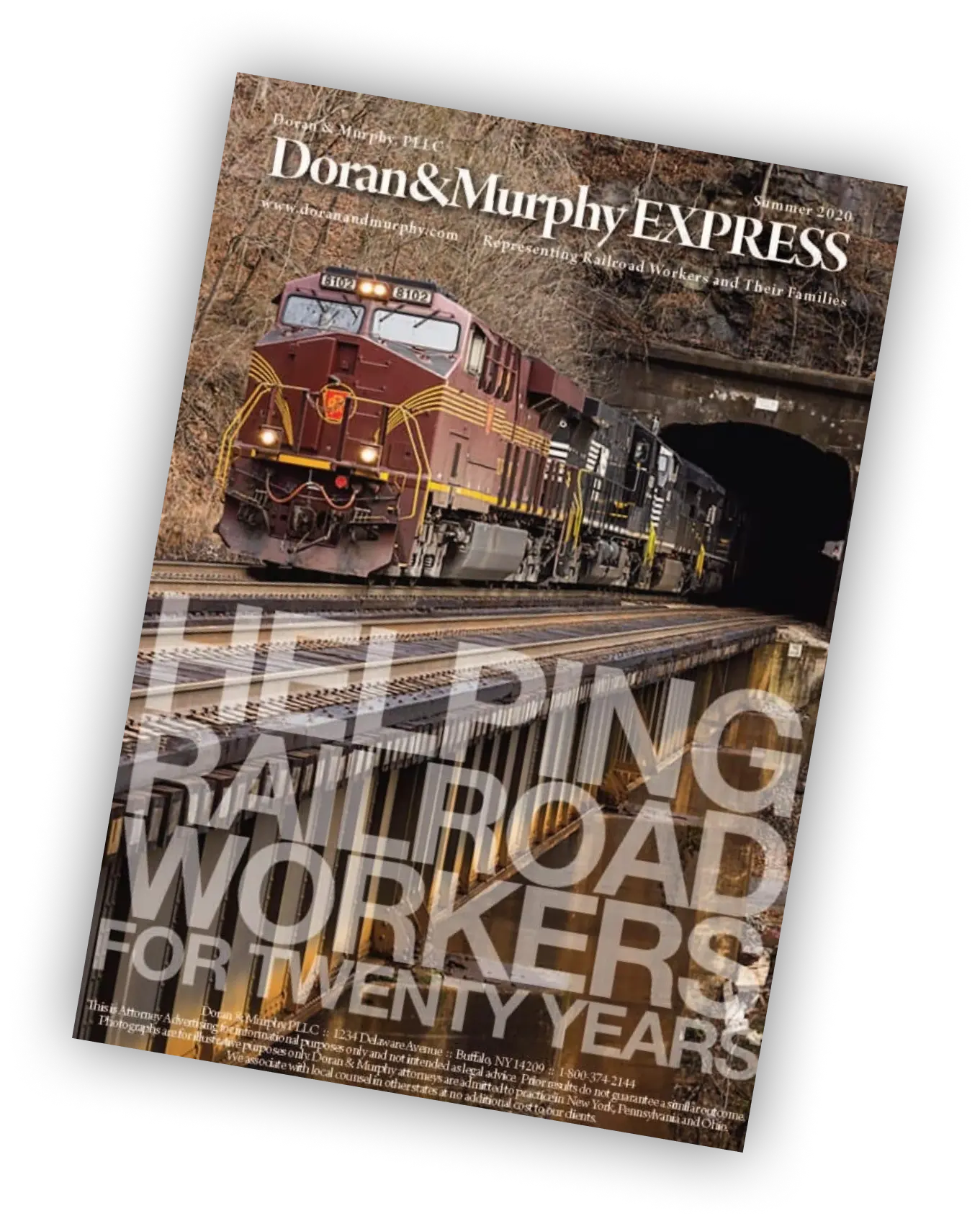The decision to bring a lawsuit for any injury is a personal decision. The reason why someone might choose to bring a lawsuit can vary from person to person. If you are a railroad worker who worked with or near asbestos materials at the railroad and you have been diagnosed with mesothelioma, some of the most common reasons are:
-
- To recover lost wages. If you were an active employee when you were diagnosed, most likely you have been unable to continue working. The disease process is very painful, and both the disease and the treatments can be exhausting. A lawsuit can help you to recover lost wages from the past, and also your anticipated future wages and fringe benefits.
- To recover for costs of treatment not covered by insurance. Some of the best treatment is found at certain specialized centers, such as Brigham and Women’s Hospital, MD Anderson Cancer Center, and others. If you don’t live near one of these centers, you may incur travel costs to obtain treatment. Additionally, some newer treatments might not be covered by your insurance. A lawsuit recovery can help to pay for these costs.
- Because passages in the railroad industry’s trade organization’s meeting minutes demonstrate that officials knew or suspected that asbestos was dangerous to employees as far back as the 1930s. Despite this knowledge, the railroads did not inform or warn employees, nor did they provide respirators until many decades later.
-
- 1932 American Railway Association Meeting Minutes – “Dusts… produce lung pathology when inhaled, and these constitute the most usual health hazard…The pathology of pneumoconiosis is that of fibrosis. Wherever the dust lodges in the small alveoli of the lungs it sets up an irritation and the process of fibrosis begins and blocking of the lymphatics in that area occurs. … with continued dust inhalation and blocking of spaces, the fibrotic process increases until even an entire lobe may be consolidated….In the first stage the symptoms are few, usually the general health is good except for a tendency for frequent chest colds, there is a slight shortness of breath on exertion, practically no cough or expectoration, and an occasional pleurisy pain. … Physical examination is negative … X-ray shows a definite increase in the lung shadows due to the increased fibrous tissue.”
- 1933 American Railway Association Meeting Minutes – “The subject of dust as an industrial hazard has been presented for consideration by the Committee. The subject cannot be considered as inherently a railroad problem; however, it may arise in connection with various lines of work, and when it does so, presents a problem which demands attention…At present the best recommendation that can be offered is that dust pathology of the lungs may be prevented by plentiful use of water to wet down the dust at the point of origin, or by forced ventilation to remove the dust particles. In the event that neither of these methods is practicable, respirators should be made available to employees who are required to work in the presence of the dust.”
- 1935 Association of American Railroads – “Pneumoconiosis (pneumon-lung; konis-dust) is a condition that may be caused by any kind of dust entering the lung; but we as railroad surgeons are undoubtedly more interested in silicosis and asbestosis than in other types. . . In the way of prevention it becomes necessary (1) To educate all concerned. (2) Get rid of dust. (3) Sprinkle the working area with water. (4) Have employees wear inhalers. (5) Have frequent analyses made of the dust content of the air at different times during the working hours.”
- 1951 Association of American Railroads – “The Committee has defined and described the condition of pneumoconiosis, or dust disease of the lungs, and mentioned silicosis and asbestosis, as forms of the disease most interesting to railroad surgeons.”
- 1958 Association of American Railroads – “There is very good proof that asbestos is a cause of carcinoma.”
-
Additionally, there is evidence that the railroads purposefully kept this information from employees. In documents commonly known as the Alton Railroad Documents, letters were sent back and forth between various railroads regarding plans for dealing with the hazards of asbestos:
-
-
- 1936 Letter – “. . . we are to give consideration to and recommend what action seems immediately advisable to protect the railroads from the following possible occupational diseases: 1. Asbestosis, from handling asbestos materials, such as boiler lagging.”
- 1936 Letter from NY Central to the Railroad Engineering and Shop Committee – “I would recommend that all employees handling asbestos should wear respirators . . .”
- 1937 Memo regarding a meeting – “A discussion was had concerning the best methods of protecting workers from Asbestosis . . . The men handling Asbestos . . . are not the only ones exposed to the danger of these diseases, as the dusts they make in doing their work create a danger to others that may be working in the vicinity.”
- Recommendations Covering Rules and Instructions to Be Observed By Employees Handling Asbestos (sent in 1937) – “1. Respirators should be furnished by the Company and orders issued that they should be worn at all times when handling asbestos. Attention is called to some of the specific instances where respirators are required.
- Loading or unloading shipments of asbestos
- Mixing asbestos
- Removing lagging from boilers
- Removing lagging from pipes
- Breaking up or grinding asbestos
- . . . 9. It is suggested that the above recommendations be communicated directly to the foremen involved. Publicity on the above might suggest the making of claims.”
- 1937 Letter enclosing the Recommendations Covering Rules and Instructions to Be Observed By Employees Handling Asbestos – “It must be understood, however, that these recommendations are not to be posted or given out but are for the information of the supervision exclusively . . .”
-
- To give a face to the effects of the railroad’s choices. Some railroaders who have been diagnosed with mesothelioma want the railroad to see what their conduct has done to a real person. The choices that they made to cut costs, to stop the flow of information and to not take steps to reduce exposures to asbestos result in real people being diagnosed with terrible diseases.
- To recover for pain and suffering. It is true that there is no amount of money that can make a person feel truly whole after a lawsuit. However, the purpose of monetary damages for pain and suffering is to compensate people for that pain and suffering to offset what the person went through in the past, and account for what he or she is going to go through in the future.
- To ensure that loved ones will be taken care of. A diagnosis of mesothelioma has been compared to a death sentence. Most people with mesothelioma understand that they will experience a shortened life expectancy because of it. While no loss of consortium is allowed under the FELA, the law does account for individuals who are financially dependent upon an injured railroader, as well as those who have suffered from a loss of guidance from losing a loved one.
If you are a railroad worker who has been diagnosed with mesothelioma, please contact us today to discuss a potential lawsuit.





